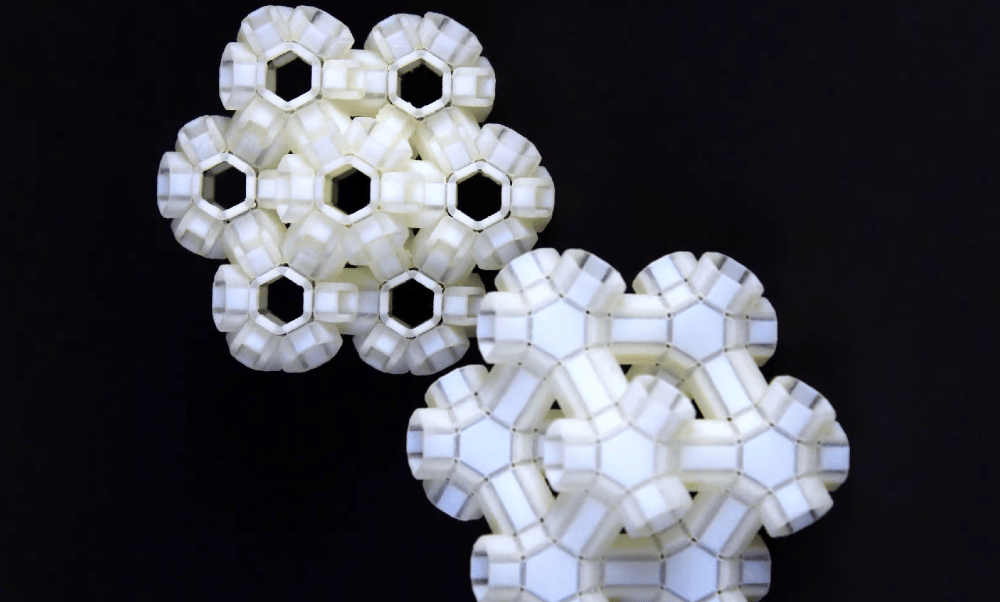
Metamaterials are artificially engineered materials designed to induce customized properties in a material that originally does not exist. The metamaterial structures are obtained by making significant changes in internal material structure through different techniques.
The business of engineering metamaterials is extremely tedious and not for the meek. Although a successful outcome can have significant implications for innovation (and profit) the sector is restrained due to its hit-and-miss output. That might change sooner than later.
Industries impacted by metamaterials include public safety, sensor identification, high-frequency battlefield communications, improved ultrasonic sensors, solar energy management for high-gain antennas, and remote aerospace applications.
Problem
Combinatorial problems often arise in puzzles, origami, and metamaterial design. Such problems have rare collections of solutions that generate intricate and distinct boundaries in configuration space. Using standard statistical and numerical techniques, capturing these boundaries is often quite challenging. Is it possible to flatten a 3D origami piece without causing damage? This question is one such combinatorial issue. As each fold needs to be consistent with flattening, such results are difficult to predict simply by glancing at the design.
Machine Learning Solution:
To answer such questions, the UvA Institute of Physics and the research center AMOLF have shown that researchers may more effectively and precisely respond to such queries by using machine learning techniques.
Process: Machine Learning and Convolutional Neural Networks (CNNs)
Although metamaterials have a wide range of potential uses, creating a new one is difficult due to their unpredictable behavior. It typically comes down to trial and error to determine the general metamaterial properties of different structures starting from a specific set of building blocks. Recent technological developments make it unnecessary for researchers to perform all this work by hand. However, typical statistical and numerical methods are slow and prone to errors because the properties of combinatorial metamaterials are so sensitive to changes to individual building blocks. This is where machine learning comes into play. CNNs can precisely predict the metamaterial properties of any configuration of building blocks down to the smallest detail, even with only a minimal set of examples to learn from.
- Comprehensive Public Safety Plan Survey: Equity - March 11, 2024
- Comprehensive Public Safety Plan Survey: Court System - March 11, 2024
- DC Comprehensive Public Safety Plan Survey: Surveillance // Privacy - March 11, 2024









